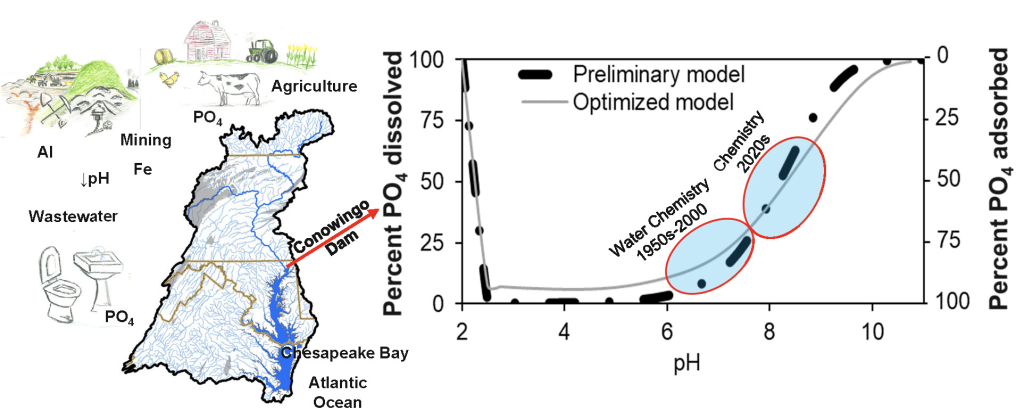Cravotta, Charles A., Hydrology/Geochemistry, Cravotta Geochemical Consulting, 859 Bloody Spring Rd, Bethel, PA 19507, cravottageochemical@gmail.com.
Nutrient pollution from agriculture and urban areas plus acid mine drainage (AMD) from legacy coal mines are primary causes of water-quality impairment in the Susquehanna River, which is the predominant source of freshwater and nutrients entering the Chesapeake Bay. Recent increases in the delivery of dissolved orthophosphate (PO4) from the river to the bay may be linked to long-term increases in pH, decreased acidity of precipitation, and decreased acidity, iron, and aluminum loading from widespread AMD.
Since the 1950s, baseline pH increased from ~6.5 to ~8 in the West Branch and “North Branch” of the Susquehanna River, which drain bituminous and anthracite coalfields of Pennsylvania. A current baseline pH of ~8 and daily maxima exceeding 9 have been documented along the lower Susquehanna River. In response to improved river quality, bioavailable PO4 now may be released into solution from legacy sediment that has filled major impoundments in lower reaches of the river. At typical pH (5-8) of natural water, aqueous PO4 species tend to be adsorbed by hydrous iron, aluminum, and manganese oxides that coat soil and sediment particles; however, PO4 may be substantially desorbed at pH >8.

We created a geochemical model that simulates equilibrium aqueous/solid distributions of PO4 as pH and other solution characteristics change. Considering current conditions in the lower Susquehanna River, the model demonstrates potential for extensive release of adsorbed PO4 at pH >8. Empirical data from laboratory experiments corroborate model results. The transfer of PO4 into the water column may increase algae growth, which removes CO2 and drives pH to higher values, facilitating additional PO4 release and exacerbating the potential for harmful algal blooms. Thus, legacy sediment is a currently unquantified source of PO4 that warrants consideration by resource managers and programs collaborating to reduce phosphorus loads to the bay and similar settings worldwide.
acid mine drainage, phosphate, adsorption, algae blooms